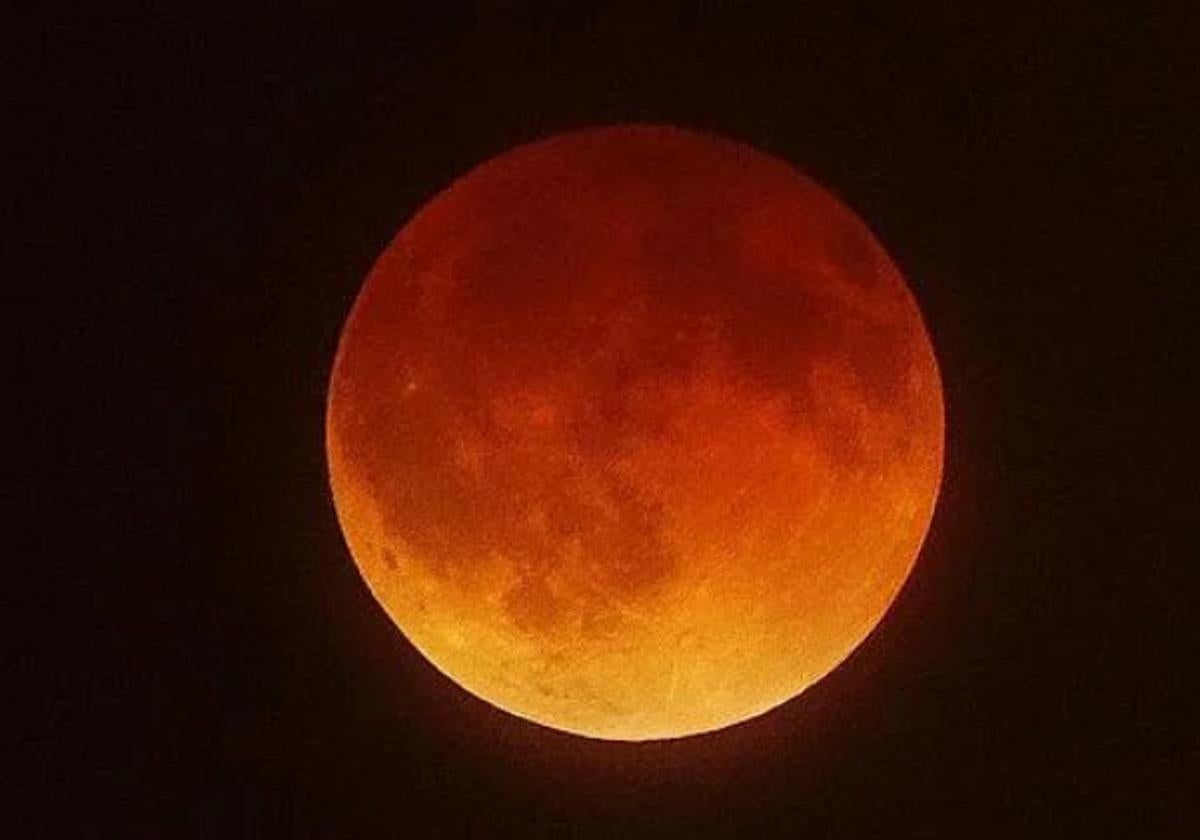'Blood moon' in March: When is it, what time will the total eclipse happen and where can it be seen in Spain?
It will cross Western Europe and be visible in parts of Asia, parts of Australia, West Africa, and North and South America
ABC
Madrid
Monday, 10 March 2025, 16:01
Millions of people from several places around the globe will have the opportunity to observe the total lunar eclipse on 14 March which will simultaneously allow us to see a full moon with a reddish hue moon, also known as a 'blood moon'. It will be possible to see in Western Europe, parts of Asia, parts of Australia, West Africa, North and South America and Antarctica. People in Spain will also be privileged to witness it, especially those located in the Canary Islands, in central and in western parts of mainland Spain, as well as in Ceuta and Melilla. To a lesser extent, the phenomenon will also be visible on the east side of the Iberian Peninsula and on the Balearic Islands.
What is the reason for the blood moon?
As detailed by eltiempo.es, the total lunar eclipse phenomenon occurs when the Earth comes between the sun and the moon, casting its shadow on the satellite. Despite being completely eclipsed, sunlight still reaches the satellite, but as it passes through the Earth's atmosphere, the shorter wavelengths, such as blue and violet, are scattered. The longer wavelengths, red and orange, are filtered out, giving the moon its distinctive colour.
American space agency Nasa explained that one can visualise the Earth's sunrises and sunsets on the surface of one side of the moon. "The same phenomenon that makes our skies blue and our sunsets red causes the moon to turn reddish orange during a lunar eclipse. Sunlight appears white, but it actually consists of a rainbow of components, and different colours of light have different physical properties."
The best view will be seen at 6.58am on Friday 14 March. "The total lunar eclipse will last for approximately one hour and six minutes, during which the Earth's shadow will completely obscure the moon," said Nasa.
How to observe this planetary event?
Perfect observation is possible in areas with less light pollution, provided that the weather is clear. The full moon in March will be brightest in the constellation of Virgo.
In Spain, the total lunar eclipse will be visible at 8.25am. "Its viewing could be restrained by the first rays of the day. However, the eclipse's preliminary phases can be admired before dawn." Nasa said that people can "try using binoculars or a telescope to get a better view".
